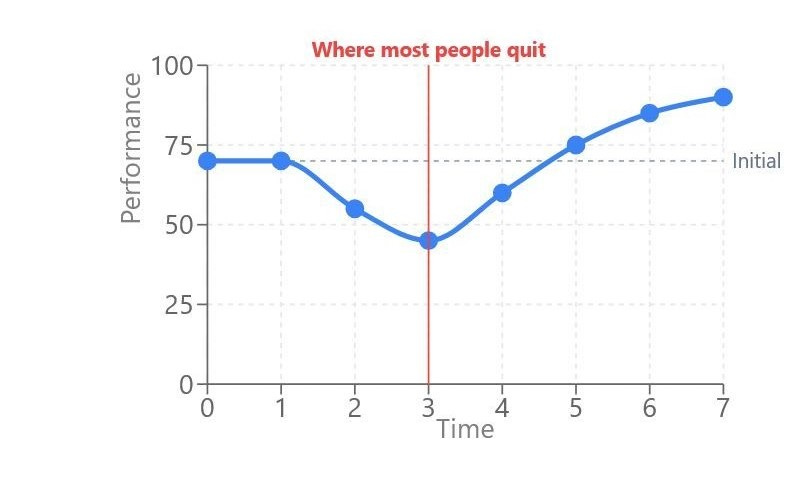The 5 Barriers to Tech Adoption in Construction
Why your jobsite is still running on paper—and how to fix it.
👋 Hey, Kyle here! Welcome to The Influential Project Manager, a weekly newsletter covering the essentials of successful project leadership.
Today’s Overview:
Construction teams are overwhelmed with binders, drawings, forms, and outdated information—still running on paper in a digital world.
Most leaders blame slow tech adoption on resistance, but the real enemy is hidden: fear of disruption, broken processes, and cultural drag.
In this essay, I reveal the 5 hidden barriers to tech adoption—and how to lead your team through real, lasting digital transformation.
🏗️ Today’s issue is brought to you by Fieldwire by Hilti!
Boost productivity on your construction projects.
Try for free to streamline field to office communication with Fieldwire by Hilti, the easy-to-use jobsite management software.
Access & share information: Have all your plans and project docs available anywhere at anytime.
Plan & manage work: Consolidate project information into one centralized location.
Track & report progress: Create customized forms and reports that capture all completed work.
See how you can leverage Fieldwire by Hilti to improve your jobsite productivity.
🚧 The 5 Barriers to Tech Adoption in Construction
Filed under: Construction, Project Management
Take a walk around any jobsite today and you’ll likely find stacks of paper tucked inside a trailer, stuffed in a foreman's pocket, or taped to a wall.
Construction drawings
Specifications
Shop drawings
Field reports
Safety forms
and much more…
Printed. Reprinted. Revised. Highlighted. Crossed out.
Even in 2025, paper still runs the jobsite.
And that’s a problem.
Because paper may feel safe, but it’s a costly illusion.
That Gantt chart is outdated the second it’s printed, it’s bulky and wasteful—and it slows your entire project down.
It took me 10 years to learn this:
Most jobsites are not resistant to technology. They’re just trapped in systems that punish progress.
In this essay, I’ll break down the five real forces stopping digital transformation—and what you can do to overcome them.
Why Paper Still Reigns (for now)
Let’s be honest: paper feels familiar.
It’s what superintendents trust. It’s what foremen know. It’s what has worked (more or less) for decades.
But paper is also:
Permanent – outdated the second it's printed
Heavy – physically and cognitively
Disorganized – invites duplication and errors
Wasteful – environmentally and reputationally
Expensive – reprints, corrections, and confusion cost real money
Paper is dragging projects backward.
And while everyone says they want to digitize, few actually do.
Why?
The 5 Real Barriers to Tech Adoption
The main barrier to adoption at scale is fear of change or, more like, the unknown.
Changing how most individuals consume and communicate information has proven extremely difficult. Change is scary, intimidating, overwhelming, and sometimes even costly.
Beneath the surface, these five invisible forces are holding your project back from evolving:
1. Tech vs. Process Mismatch
You can’t layer modern software on top of broken workflows and expect magic.
Too often, software is layered on top of outdated processes—like putting new tires on a rusted-out truck. Instead of making things better, tech compounds inefficiencies.
The fix: Fix the process first. Then layer in tech that supports it.
2. The Capability Trap
Every new system creates an initial dip in performance. That’s normal.
But when people hit that dip, leadership pulls the plug—thinking the tool failed. So the team retreats to what’s comfortable: paper, binders, and spreadsheets.
The fix: Expect the dip. Build support systems. Train through it.
3. Risk Aversion
Construction runs on risk management. And change = risk.
People stick to what they know, even if it’s sub-optimal. Because the devil you know feels safer than the tool you don’t.
The fix: Start small. Pilot digital tools on low-risk scopes. Show early wins.
4. Intolerance to Failure
Innovation requires trial and error. But in construction, mistakes are expensive—and unforgiving.
So teams avoid new tools out of fear of messing up.
The fix: Create a culture where small failures are part of long-term success.
5. Identity Disruption
Let’s not overlook the human side of transformation.
Walk into any team and tell them “things are going to change around here,” and watch what happens.
Change triggers survival instincts. You’ll see nothing but fight, flight, or freeze.
That’s because many people—especially those who’ve spent years on the job—see their tools and processes as part of their professional identity.
They’ve built their reputation on how they do things. And if you ask them to abandon those methods overnight, it can feel like you’re erasing their value.
The fix: Don’t call it “change.” Call it evolution. Build on what already works.
🧠 Reframing “Change” as Evolution
People don’t fear progress. They fear change.
The most successful tech rollouts don’t feel like an overhaul. They feel like an upgrade—something that makes the job easier, faster, safer.
They start small: solving a real pain point in a clear, simple way. Then, they ripple outward, improving adjacent workflows naturally.
The best tools feel like relief, not more work.
Less friction
Faster answers
Better communication
That’s when adoption sticks.
Where Construction Leaders Should Start
The U.S. construction industry alone is worth over $2 trillion.
VC-backed startups are flooding the space with tools for every phase of the project lifecycle. This creates a perfect storm:
More technology. More complexity. More noise.
To rise above it all, smart leaders do one thing first:
Validate the problem before choosing the solution.
If you don’t understand the root pain point, you’ll waste time, money, and morale chasing tools that never get used.
Where to Start Your Digital Transformation
If you want quick wins and lasting impact, look for workflows still dominated by paper, spreadsheets, or tribal knowledge.
These four areas are your high-leverage starting points:
Safety - inspections, permits, pre-task planning, and reporting
Communications - daily logs, RFIs, meeting minutes
Progress Tracking – production, planning, punchlists, manpower
Risk Management – issue logs, forecasting, compliance
These are the daily pain points that frustrate your team and slow down your project.
And they’re begging for better systems.
Final Thought
Tech adoption doesn’t fail because the tools are bad.
It fails because we ignore the very real forces that resist change.
Now you see those forces clearly.
And that gives you the power to lead through them.
Start small.
Build trust.
Solve a real problem.
And create a jobsite where everyone is literally—and digitally—on the same page
Until next week,
Kyle Nitchen
🔧 Ready to Ditch the Paper?
If you're serious about modernizing your jobsite, start with a tool built for the field.
Fieldwire by Hilti is the easy-to-use jobsite management platform trusted by top construction teams to:
Communicate in real time
Track progress on-site
Connect the field to the office—without friction
Whether you're replacing binders or streamlining entire workflows, Fieldwire makes it simple.
Reach out to Fieldwire for help getting started.

Whenever you're ready, there are 5 ways I can help you:
Get my first book! No Bullsh*t Project: A Project Manager’s Guide to Successful Project Leadership
Upgrade your scheduling software. Experience the future planning system for construction and real estate development. iPM subscribers get a 15% discount on the first year license.
Get my full toolbox (free). Access 30+ software and hardware tools I'm using today.
Learn Takt Planning. Elevate your skills as a scheduler, planner, and lean builder with the Takt Planning & Control online course. Use code "Influentialpmtakt" for 30% off.
Advertise in my newsletter. Put your brand in front of 7,000+ construction project managers, leaders, and execs. (Booked out 8 weeks)








Great read! Aligned with you on a lot of these points. Re: “solving a real problem” one of the biggest challenges I find is working with those stakeholders to uncover the core issue. A lot of busy people out on-site and therefore a lot of red herrings get chased.